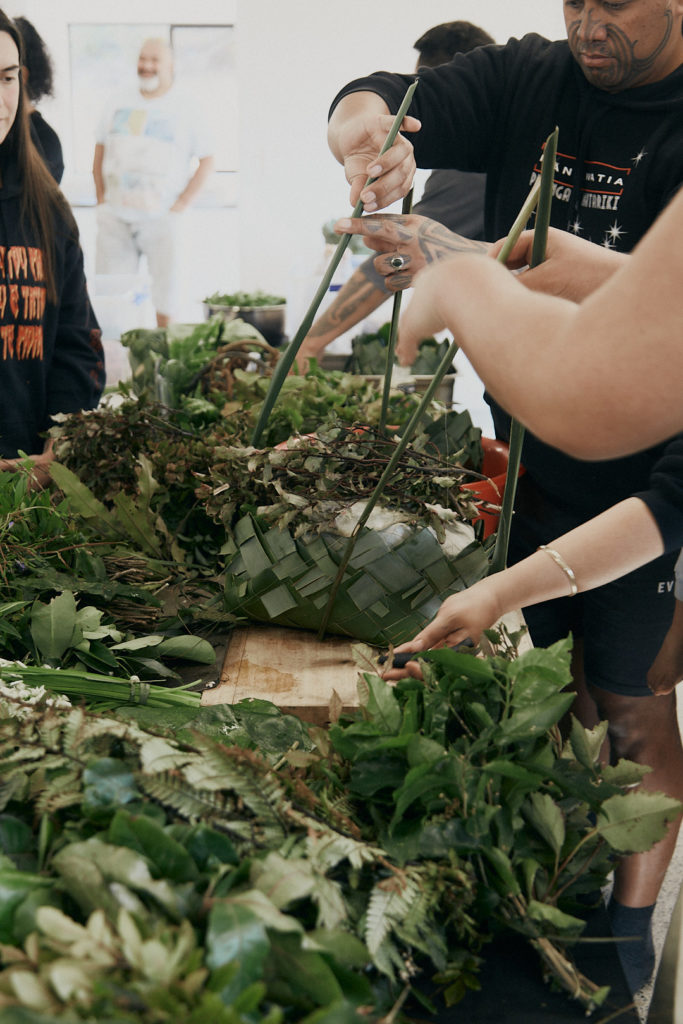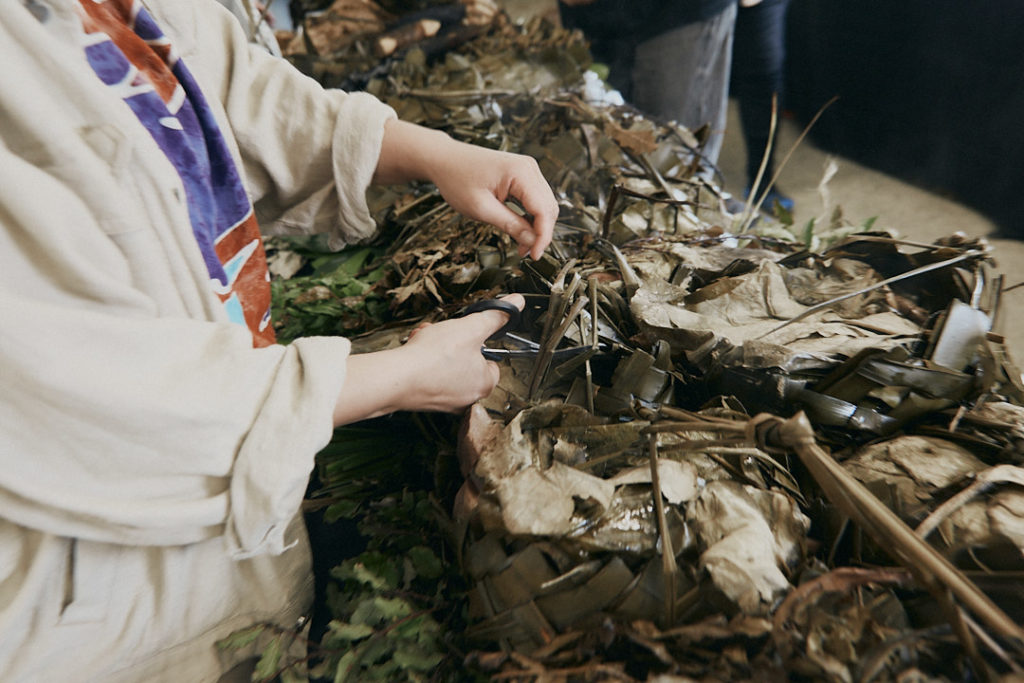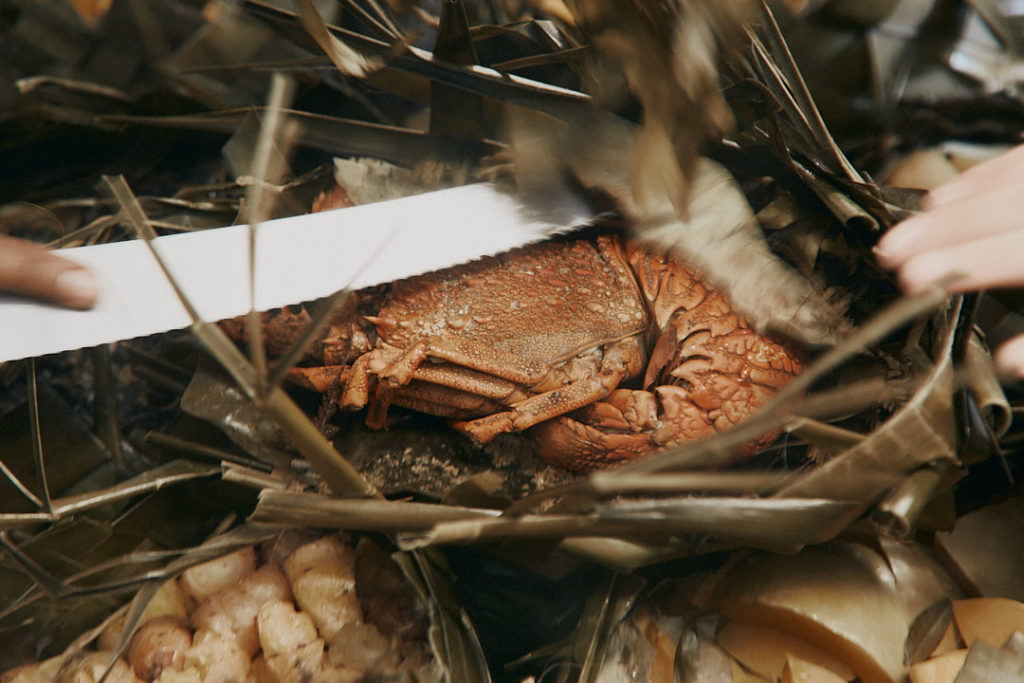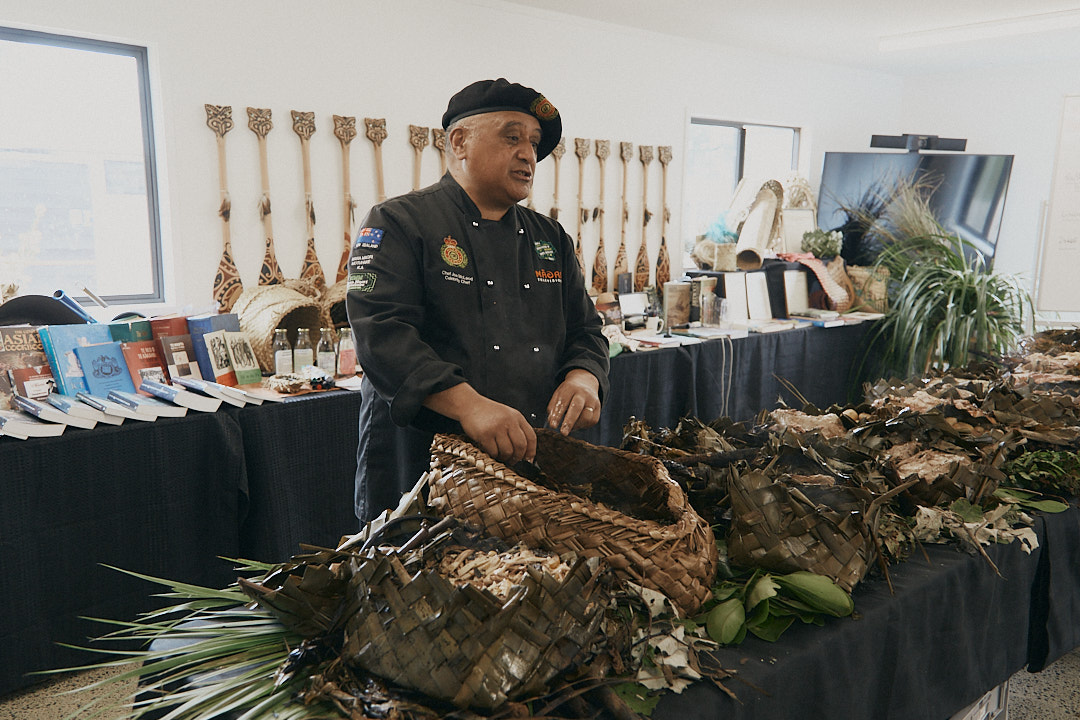
24 Oct Ngā Kai a te Māori
Alongside Joe McLeod, we hosted a three day Toi Wānanga: Ngā Kai a te Māori at Waikarā Marae in te Taitokerau. Matua Joe shared his plentiful mātauranga around kai Māori from mahinga kai to umu and everything in between.
For three days in mid-October, Toi Tangata and Joe Mcleod hosted whānau at the Toi Wānanga – ‘Ngā kai a Te Māori.’ This wānanga took place alongside the beautiful and generous haukāinga at Waikarā marae. The three days were jam packed with mahi.
Day one consisted of mahinga kai (gathering various kai Māori) from along the roadside. There were over 30 varieties harvested by the Joe and those attending including Tarata, Punua Kiokio, Matipo, Tī kōuka, Tātaramoa and Koromiko. Joe’s teaching method was old school, which largely involved keeping up with him as he harvested and making sure you were in earshot whenever he was imparting mātauranga or giving tohutohu.
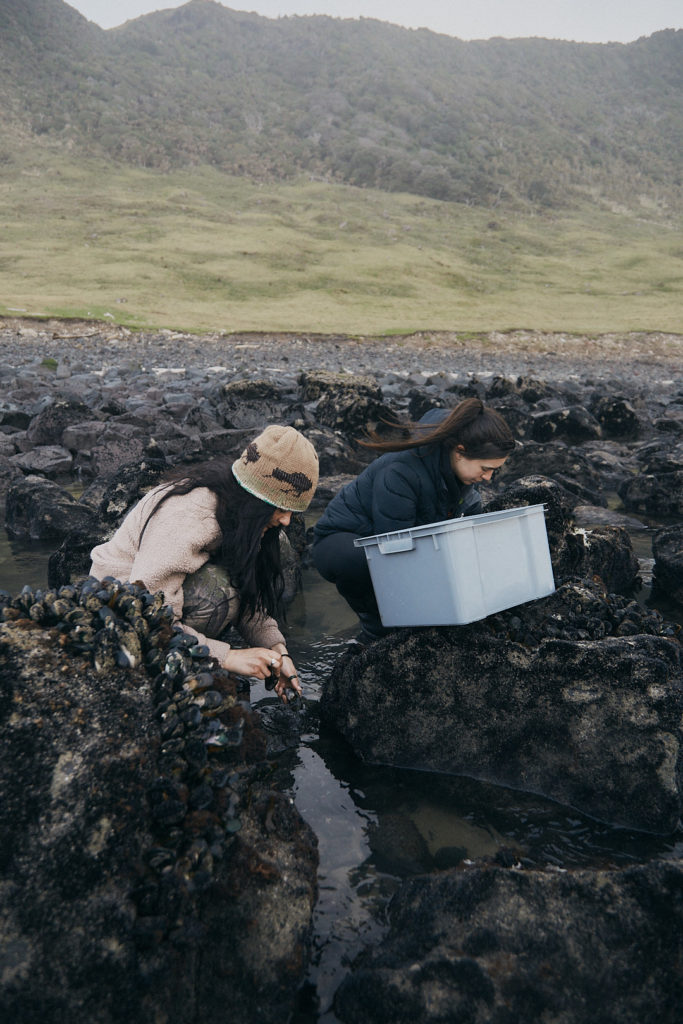
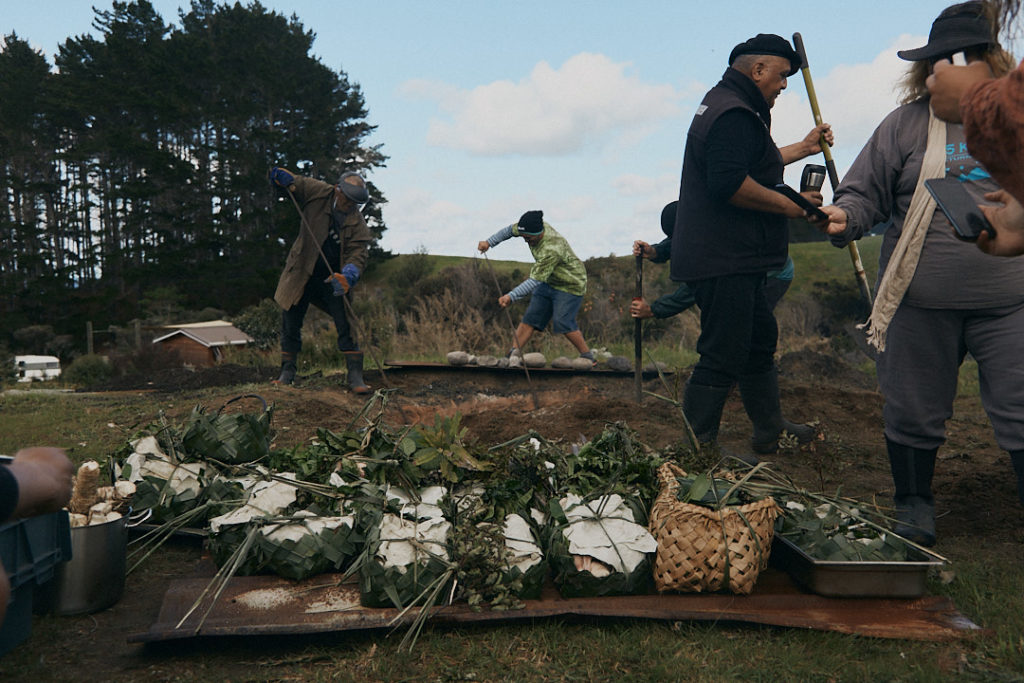
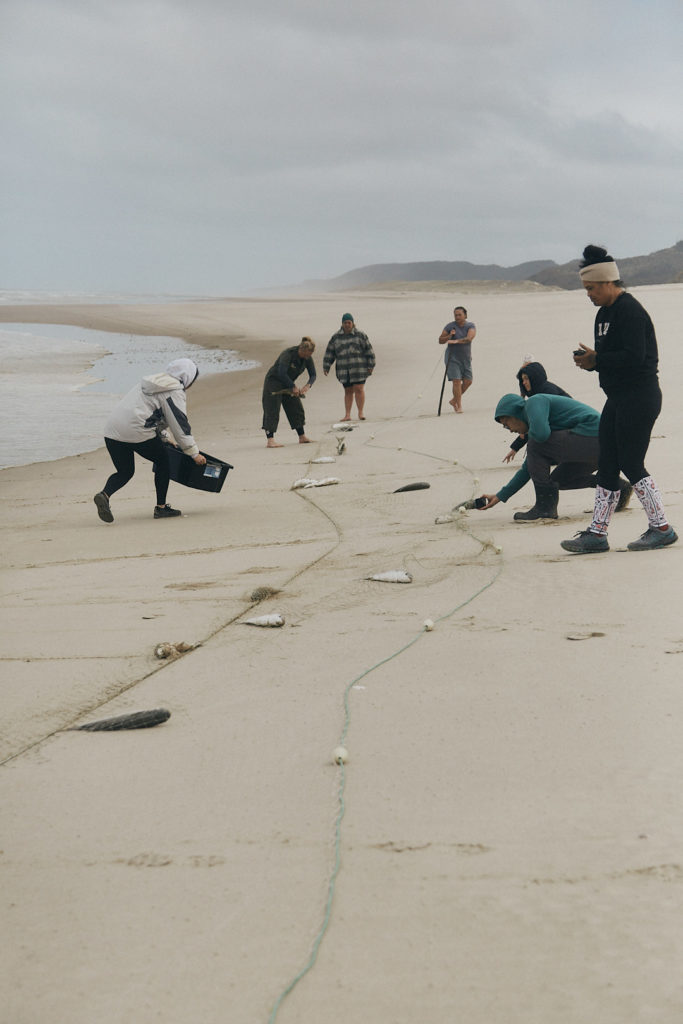
Once we had gathered everything we needed we headed back to the marae and sorted all of the kai rongoā into bunches, so they sat neatly along two trestle tables. From here we wove kono (baskets) from harakeke – some of us for the first time (with much help and guidance). These baskets would be used as a vessel for the kai.
Day two began with the Waikarā haukāinga taking our attending whānau down to the West coast beach. They showed the whānau how to spot Plankton in the waves, and therefore how to know where the mullet would be for the nets. They took them to gather Mussels and Karengo from the rocks and further south they harvested Taro and watercress from along the Waipoua river, and this was all before lunchtime!
The afternoon of day two consisted of pairing the gathered and purchased kai with the various kai rongoā that was collected and placing it into the baskets using Joe’s method, which would infuse the kai with the rongoā and ensure good heat retention and circulation in the umu.
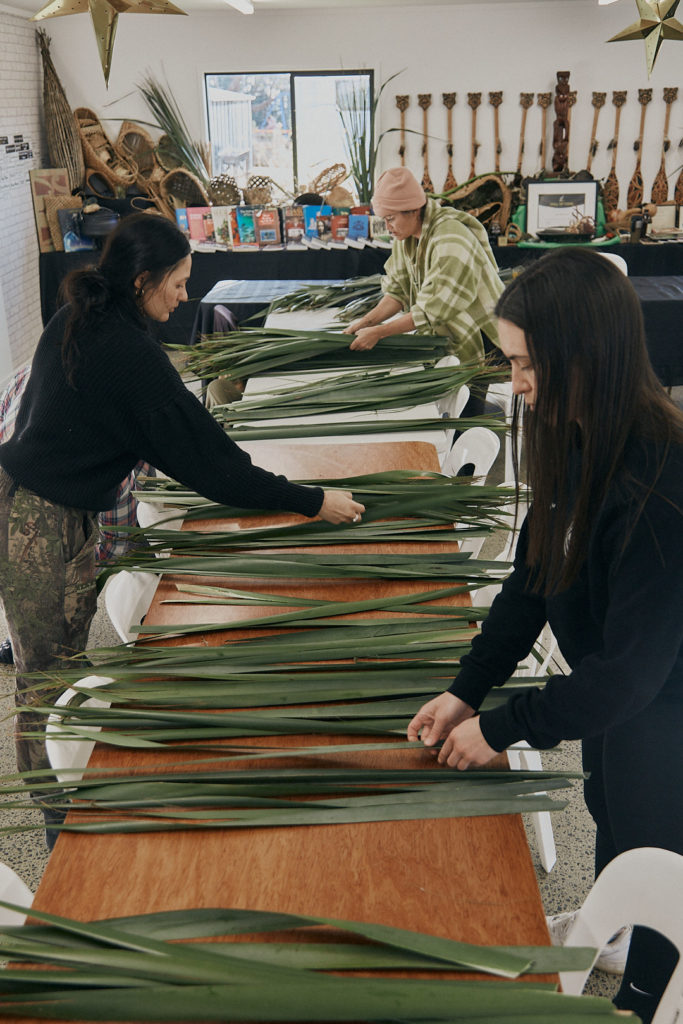
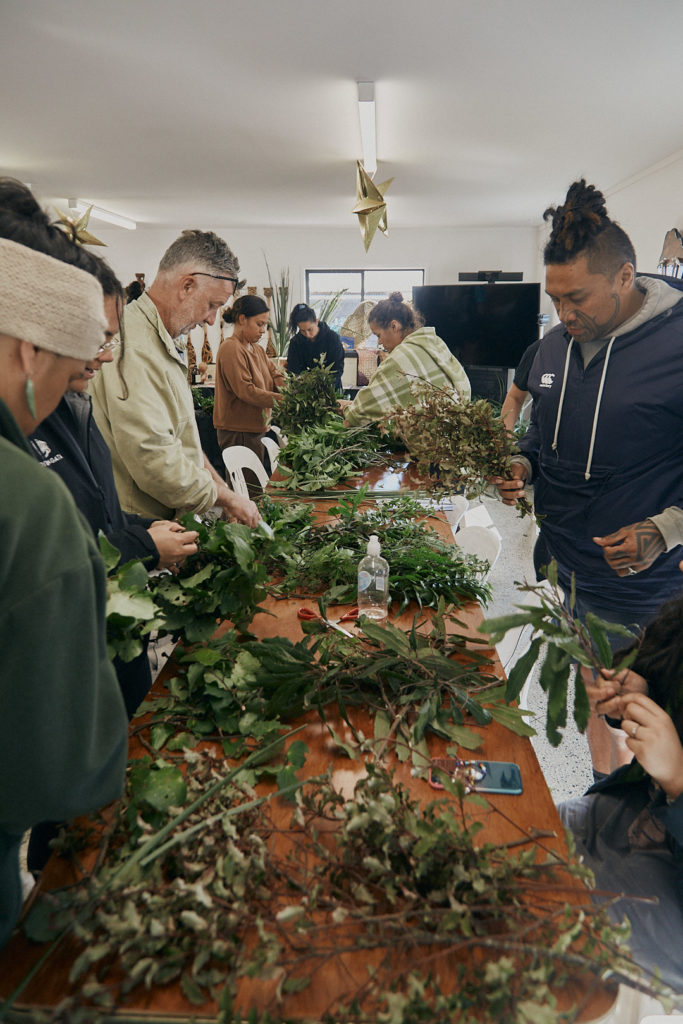
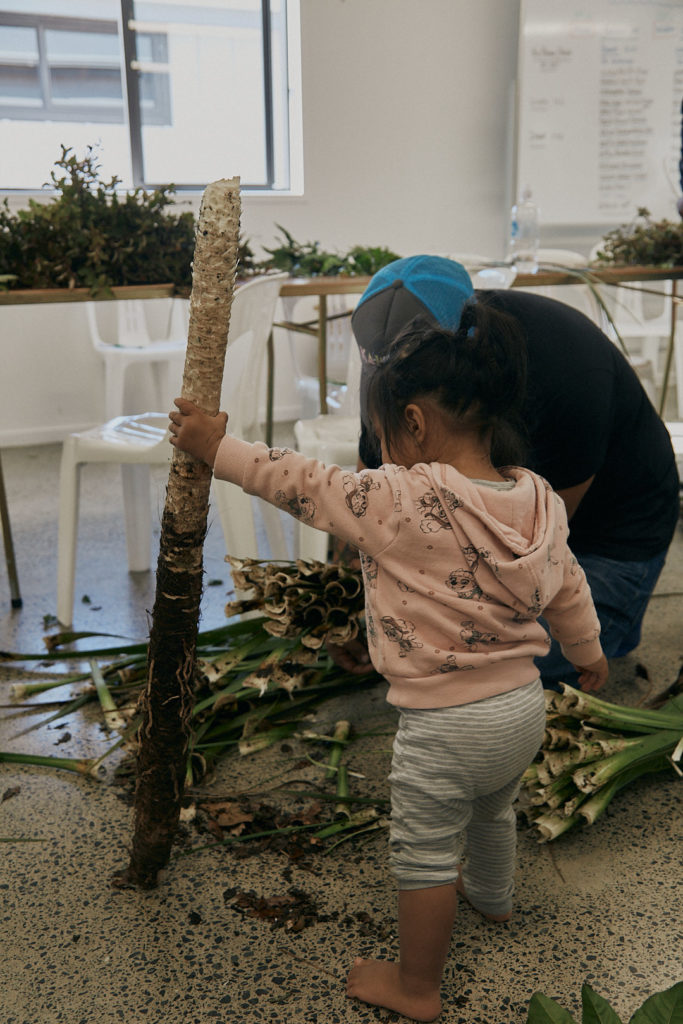
Day three was the final day! The wood was lit around 7am, and by 1pm the kai was ready to be lowered into the umu and covered with soil, water, and sacks. While the whānau waited, Joe talked through some of the rongoā, and the history of this mahi. He walked the whānau through a quick pan fried mullet and tarata recipe. During the break, whānau practiced some waiata that we could perform as thanks to Joe and the haukāinga of Waikarā.
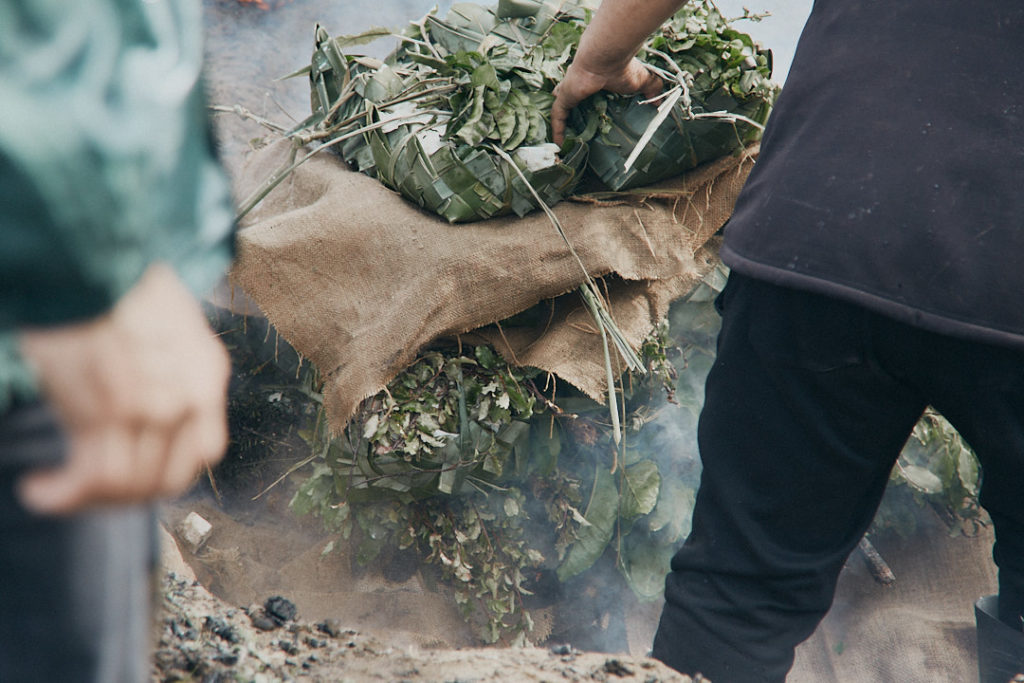
When the food came out of the umu it was steaming hot. We carried it over to the tables and laid it out. The harakeke handles were cut and Rangiora tops removed to reveal the beautifully infused kai beneath. We all ate with purpose and curiosity, tasting everything that we had prepared. Some things were unpleasantly bitter, namely the tohetaka (dandelion) and puha, others were subtly flavoured and others, like the crayfish sweet with the scent of harakeke.
It was a beautiful three days summed up by the beautiful sharing of kai, the intention with which it was eaten, and the beautiful waiata, tears and laughter that were shared. One word that comes to mind upon reflection is ‘generous.’ I reflect upon the generosity of the whenua, of the moana, of haukāinga, of Joe, and of each of our whānau who showed up bringing with them the gifts they had to offer – that generosity was sincere, open and unassuming – a glimpse into what it might feel like to experience pūnaha kai Māori (Māori food systems in a state of mauri ora) once more.
We want to send our huge thanks to the whānau at Waikarā marae who kept us safe, hosted us on their papakāinga, their whenua, and their moana. Thank you also to Healthy Families Far North and Te Roroa for their support leading into the wānanga.
Lastly, we want to send our endless thanks to Joe Mcleod. E te pāpā, e Joe, kāore e ārikarika ngā mihi o Toi Tangata, o te Hokianga, o ngā maunga whakahī o te Tai Tokerau whānui ki a koe me ō tūpuna. He whānui, he hōhonu, he hirahira hoki ngā mātauranga kei a koe. E whakapono ana mātou ki ēnei wawata ōu, ā, kei kōnei mātou ki te hāpai tonu i ngā mahi nui kei mua i a koe. Ākuni kite anō tātou i a tātou.
